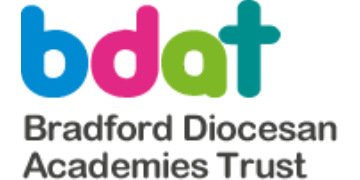Last year, along with with ASCL, CST, Challenge Partners and The Reach Foundation, ImpactEd Group launched national research using the TEP platform to understand the role of pupil engagement in school outcomes. Could measuring engagement give schools a lead indicator to act upon before problems with attendance or attainment fully take root?
With data now gathered from over 100,000 pupils from hundreds of schools across England, the findings in our report are urgent but actionable. They show disparities by year group, gender and background, but also shine a light on what’s working and where schools are beating the trend.
Here are six key takeaways :
Year 7 is a flashpoint
Data shows the transition to secondary school marks an engagement cliff-edge. Pupils’ enjoyment of school drops from an average score of 6.0 (out of 10) in Year 6 to just 3.8 in Year 7, falling further in Year 8.
Engagement doesn’t bounce back. Transition is a process, not a moment. Schools bucking the trend focus on relationships and place experienced staff in Year 7 to create a culture of connection from day one.
Attendance is deeply connected
There is power in combining attendance and engagement rather than keeping them in separate data silos. Secondary pupils in the top quartile for engagement in the autumn term were 10 percentage points less likely to be persistently absent than those in the bottom quartile.
Persistent absence, lateness and behavioural challenges are often visible symptoms of deeper disengagement. To act early, we need to measure early. Engagement data gives schools a powerful lead indicator to help prevent problems rather than just respond to them.
Target belonging strategies
Pupils eligible for Free School Meals consistently reported lower levels of trust, belonging and enjoyment; these gaps widen across the secondary years.
Belonging affects how a child sees themselves, whether they believe school is “for them” and whether they stick with it.
Solutions don’t have to be expensive. Some of the most powerful shifts come from listening carefully to pupil voices, reflecting on routines and supporting staff to make consistent, positive connections.
Girls are more driven but more vulnerable
One of the most striking findings is the contrasting experiences of boys and girls. Girls report higher levels of academic motivation, but are also significantly more likely to feel unsafe or anxious about school, particularly in Years 7 to 9.
One in three girls in these years does not clearly feel safe at school. Emotional safety must be placed on par with academic challenge. That might mean reviewing social spaces, addressing peer dynamics or rethinking policies that have unintended consequences for wellbeing.
Staff engagement drives pupil engagement
There are reasons to be hopeful. Schools with employees reporting higher job satisfaction and connection to their work have significantly higher pupil engagement.
Culture is contagious. When colleagues feel respected, valued and part of a shared purpose, it flows through to how pupils experience school. Investing in culture isn’t just a workforce strategy; it’s a key part of any pupil outcomes strategy.
Make engagement responsive and accessible
Engagement data becomes most powerful at local level. Our research shows a school’s engagement trends can shift quickly within a single year.
Time-sensitive, contextual and appropriately benchmarked data is crucial. Historic benchmarks or static data comparisons can blur important changes and lead to misdirected action.
Real-time, responsive engagement data allows leaders to spot emerging issues, understand what’s working and use that insight as a lead indicator to improve outcomes.
The research so far has helped surface patterns. Now, we need to go deeper, to understand why these patterns emerge, how best to respond and what works in different contexts.
That’s why ImpactEd Group is providing funding and subsidies for schools and trusts to participate in the next year of research. We’re particularly keen to work with all-through schools, single-sex schools, maintained schools and trusts running cross-cutting strategies on engagement or attendance.
To join the next research cohort, contact ImpactEd at: hello@impactedgroup.uk











Your thoughts